The St Andrews Periodic Table
In honour of UNESCO’s International Year of the Periodic Table 2019, the Royal Society of Chemistry (RSC) is showcasing the wonders of the Periodic Table and chemical elements. As part of their programme of events the RSC’s exhibition “Celebrating the Periodic Table” will include the St Andrews Periodic Table, on loan from the University Library.
In this blog, M. Pilar Gil shares the research that went into dating and tracing the provenance of the University’s early Periodic Table.
***
Almost two years ago, we wrote a blog post sharing the news of a grant from the National Manuscripts Conservation Trust towards the conservation of material relating to the history of Chemistry at the University of St Andrews. The conservation grant was soon used to restore a number of items to good condition. One of them was a very early Periodic Table of the Elements, the earliest known example of a published lecture-room teaching-aid periodic table. The restored St Andrews Periodic Table (ms39012) is currently on display at the Royal Society of Chemistry in London, and a facsimile is displayed within the School of Chemistry.
Here we will describe the forensic process that lead to the dating of the artefact and to trace its provenance.
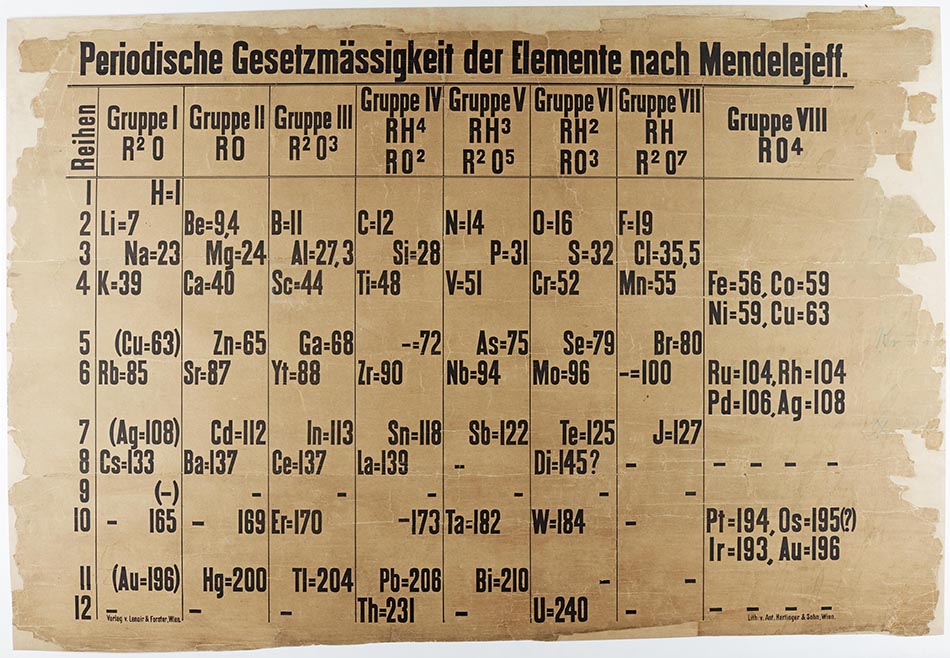
The clearing out of a store under a lecture theatre in the School of Chemistry at the University of St Andrews unearthed a very old periodic table wall chart which needed to be protected, preserved and stored in the optimum conditions of temperature and humidity, due to its fragility and special characteristics.[1]
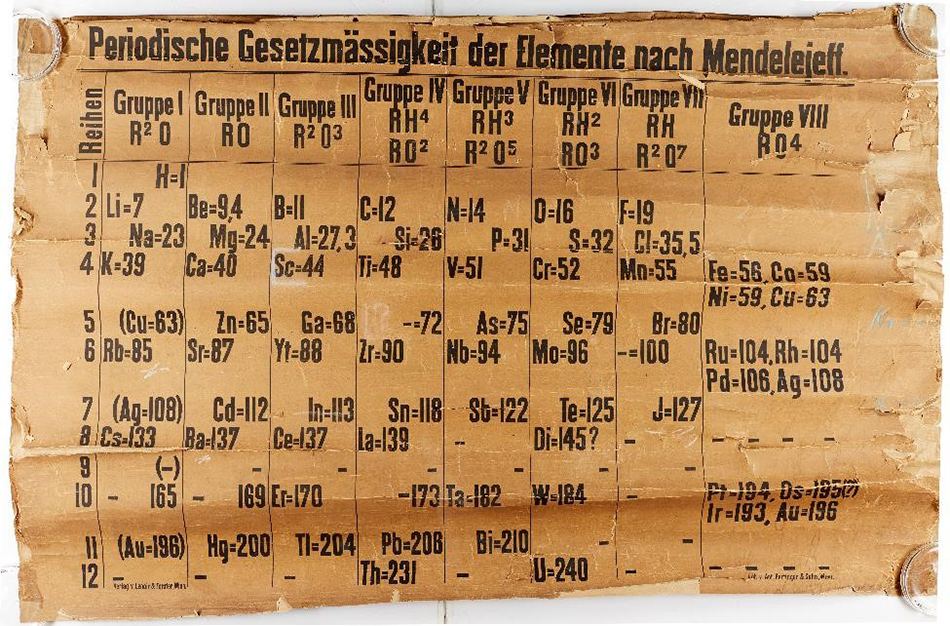
Information about the publisher and the lithographer was clearly specified on the chart. However, an important piece of information that was missing and that was relevant not only to satisfy scientific curiosity but also to increase the museistic value of the object, was to determine its date of publication. Moreover, it was important to elucidate the details of the history of the periodic table to confirm its authenticity and to prove its ownership.
The presence or absence of elements in the vacant spaces that Mendeleev had left in the table for elements that were expected but not yet discovered at the time of the table’s publication, allowed for an immediate approximate dating of between 1880 and 1886.[2] The name of the lithographer, deceased in 1890 also pointed out to a date previous to the last decade of the 19th century.
Research began to establish the table’s provenance and its probable date of publication and revealed the reasons and the means of the table’s arrival in St Andrews. The first inkling of its publication date came after a painstaking search in indexes and compilations of chemistry publications: listings for a wallchart published in Vienna and bearing the same title as the St Andrews Table were found in two bibliographical compendiums published at the end of the 19th century. In them, the wallchart is cited as published in 1885.

With this date as reference and with the aim of elucidating the reasons for this Periodic Table being found in deep storage in St Andrews more than 125 years after its publication, a further search in the institutional archives of the University of St Andrews was undertaken. With no indication if the Table had been used in teaching at the University or if it was a collector’s item bought years later to expand the large collection of alchemical and chemical works held at the University, a broad search was needed. Systematic inspection of historic photographic material, bundles of lectures and miscellaneous items related to the teaching of chemistry at the University showed a particular interest in the periodic law and the properties of the elements within the papers of Professor Thomas Purdie, who held the Chair of Chemistry at the University during the years 1884-1908. The research also uncovered a group of vouchers for science class accounts corresponding to the years 1882-1902. These bundled documents are not yet listed at item level.
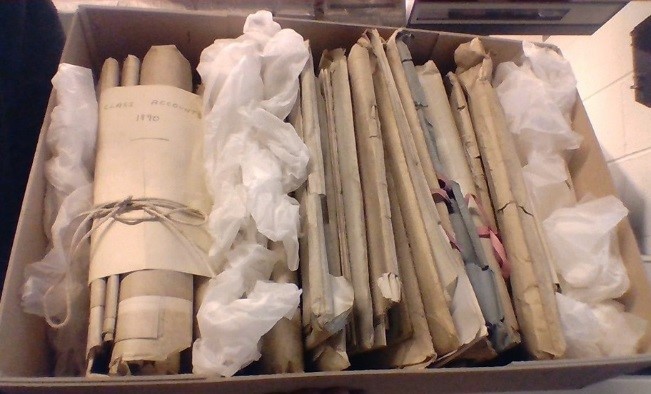
There was a ‘eureka’ moment when in one of the receipts an entry was found recording the purchase of a ‘wall-chart from Mendeleev’ by Thomas Purdie from the German catalogue of C. Gerhardt (Bonn) for the sum of 3 marks in October 1888.
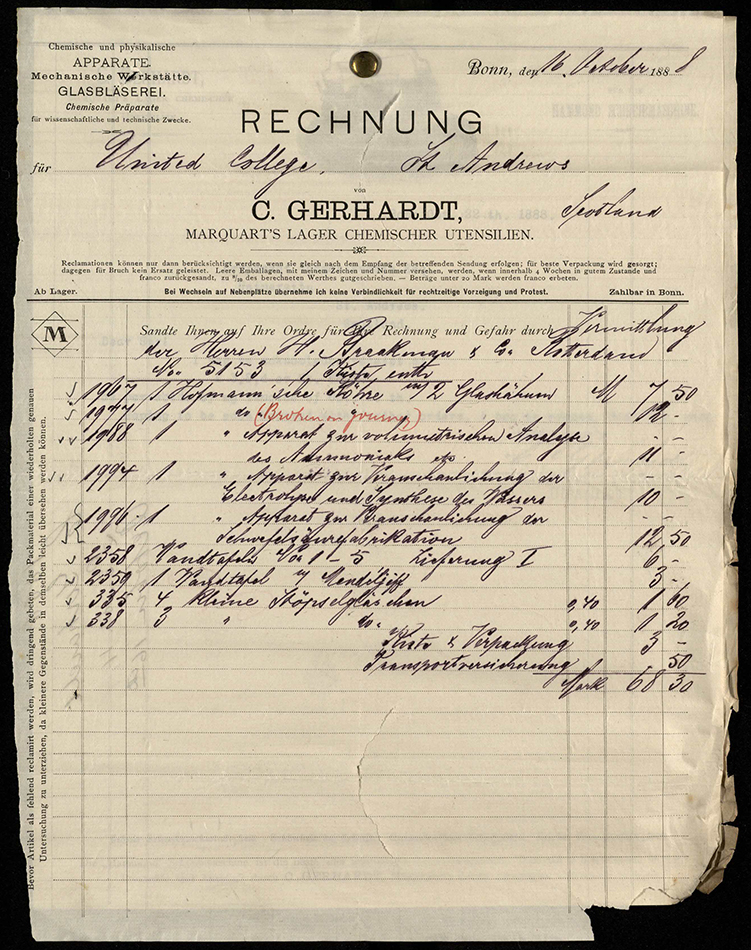
The find was very promising as that same receipt also listed the purchase of a series of technical wallcharts depicting chemical processes and one of these charts had also been found rolled up with the Periodic Table at the time of its discovery.
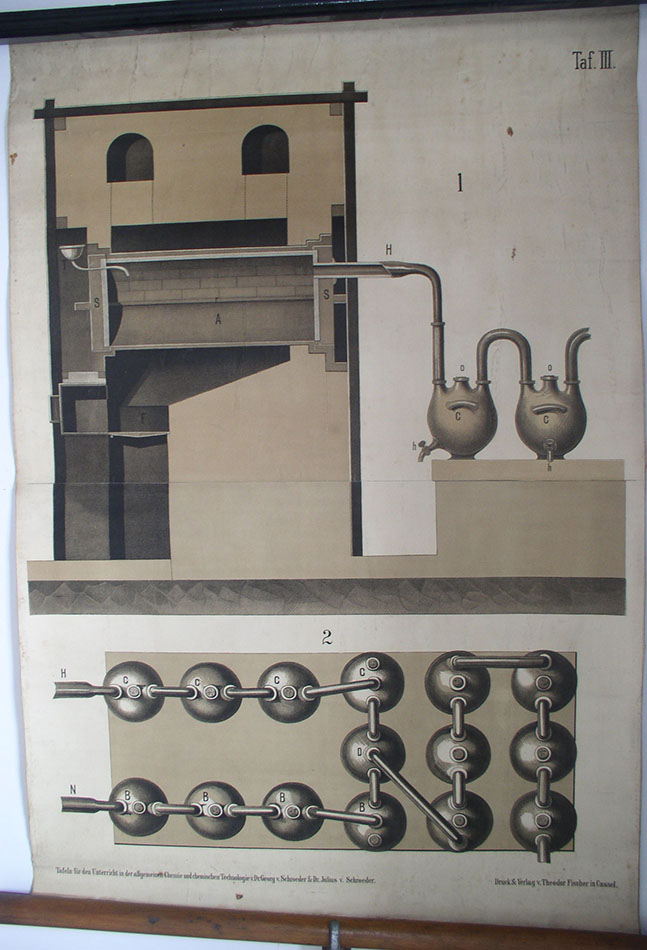
All the evidences seemed to point to the quest’s going in the right direction. However, to be totally certain that the purchase described in the voucher as ‘wallchart from Mendeleev’ matched exactly the table found in St Andrews it became essential to search a Gerhardt catalogue from the period, hoping that it would contain a periodic table with a description that would match that of the Old Table.
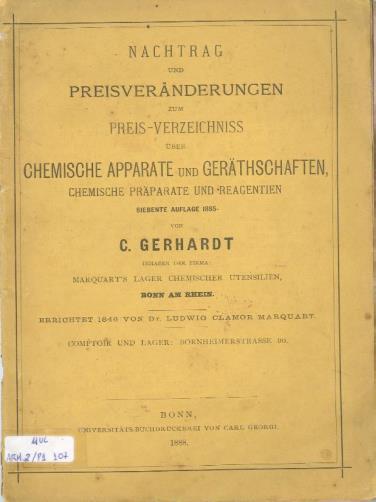
A series of international contacts with different cultural and heritage organisations in Italy, Portugal, Germany and the USA yielded the expected result when the Museum of Natural History and Science at the University of Lisbon sent to St Andrews an image from an 1888 Gerhardt catalogue. In that image was listed a periodic table with the exact same title and dimensions as the Old Table in St Andrews, with the same reference number that appeared in the voucher and exactly the same price.

There is a Periodic Table displayed high in a lecture theatre in the St Petersburg State University, a one-off hand-painted table possibly commissioned by Dimitri Mendeleev himself and dated 1876 according to the text alongside to the chart.[3] As indicated by this caption, the St Petersburg’s table seems likely to be the earliest periodic table wallchart. The St Andrews table, produced nine years later, appears to be the earliest surviving copy of a commercially printed periodic table wallchart.
In conclusion, this research demonstrated that what may be considered the oldest published periodic table wallchart was created in Vienna in 1885, sold in Bonn by C. Gerhardt in October of 1888 and, during that year, this periodic table arrived in St Andrews via Rotterdam, as attested by the financial records of the University of St Andrews still held within the institutional archive of the University. Its journey documents an example of long-distance commerce, a trade between nations that enabled scientists to acquire goods and publications in an international and extensive market.
Pilar Gil
Library Assistant (Digitisation)
[1] O’Hagan, D., Gil, M. P. & Aitken, A. Chemistry World 16, 68-69 (2019). https://www.chemistryworld.com/opinion/is-this-the-worlds-oldest-classroom-periodic-table/3009960.article
[2] Ibid.
[3] O’Hagan, D., Gil, M. P. & Aitken, A., Chemistry World. https://www.chemistryworld.com/opinion/letters-june-2019/3010475.article